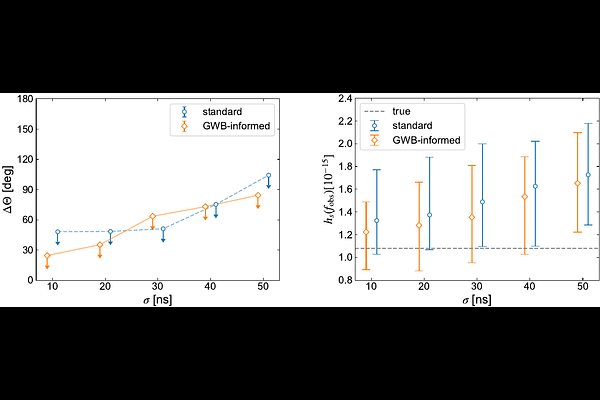Resolving Individual Signal in the Presence of Stochastic Background in Future Pulsar Timing Arrays

Resolving Individual Signal in the Presence of Stochastic Background in Future Pulsar Timing Arrays
Kazuya Furusawa, Sachiko Kuroyanagi, Kiyotomo Ichiki
AbstractRecent pulsar timing array (PTA) observations have reported evidence of a gravitational wave background (GWB). If supermassive black holes (SMBHs) are indeed the primary source of this signal, future PTA observations, such as those from the Square Kilometer Array (SKA), are expected to simultaneously capture multiple continuous gravitational waves (CGWs) emitted by bright individual SMBH binaries alongside a gravitational wave background (GWB). To address this anticipated scenario in the SKA era, we revisit the F-statistic, a detection method for single source signals in PTA datasets, and introduce a new modeling that accounts for unresolved GWs as a stochastic GWB. Here, we applied this improved F-statistic to the mock datasets that include both CGW and GWB and evaluated how accurately F-statistic can identify the parameters of CGW. As a result, we demonstrate that our approach can successfully improve the estimation of the sky position and the amplitude of CGW, particularly when the GWB is dominant over white noise. This work serves as an initial step toward developing an efficient and robust algorithm based on the F-statistic for future PTA observations.